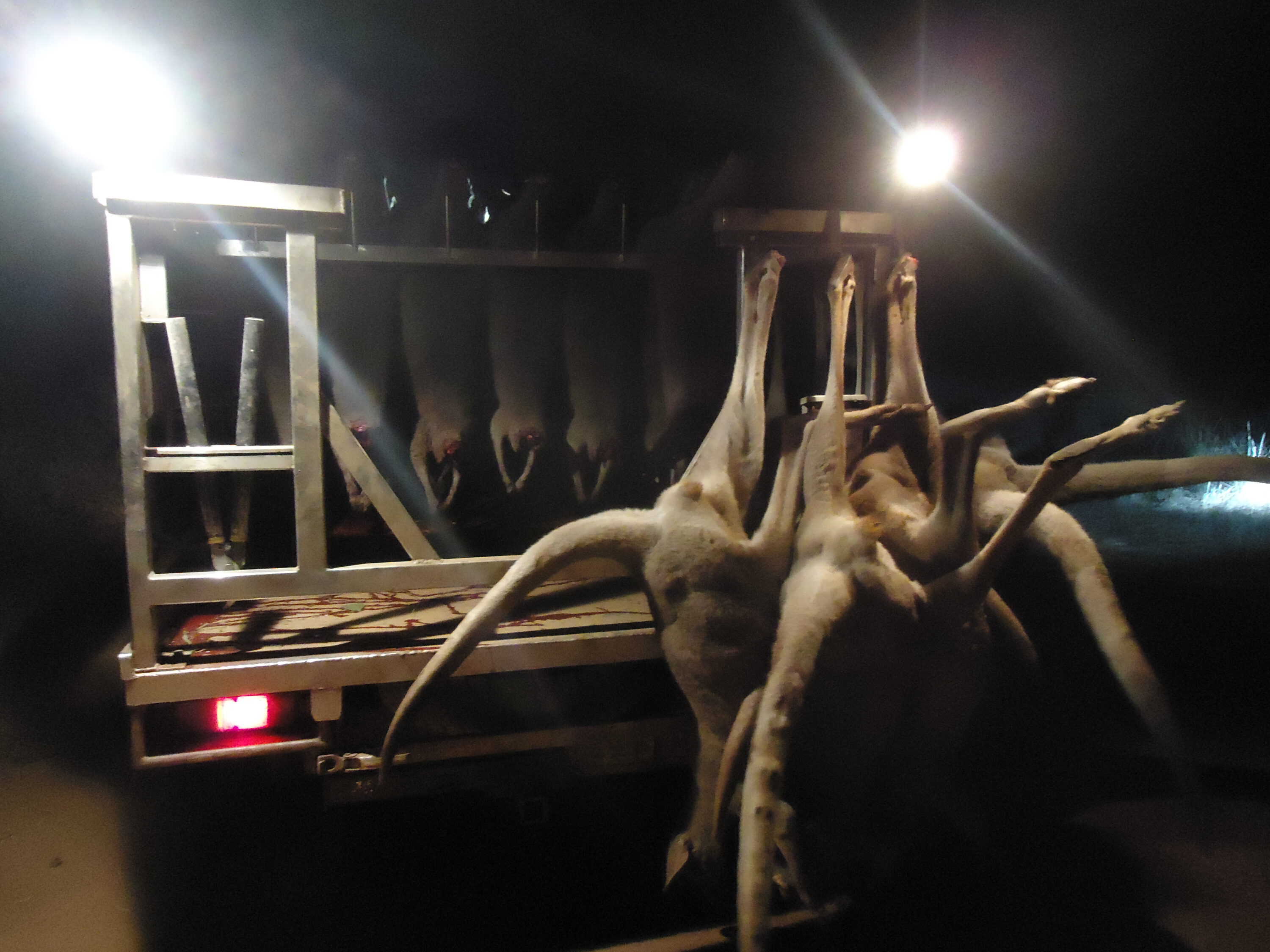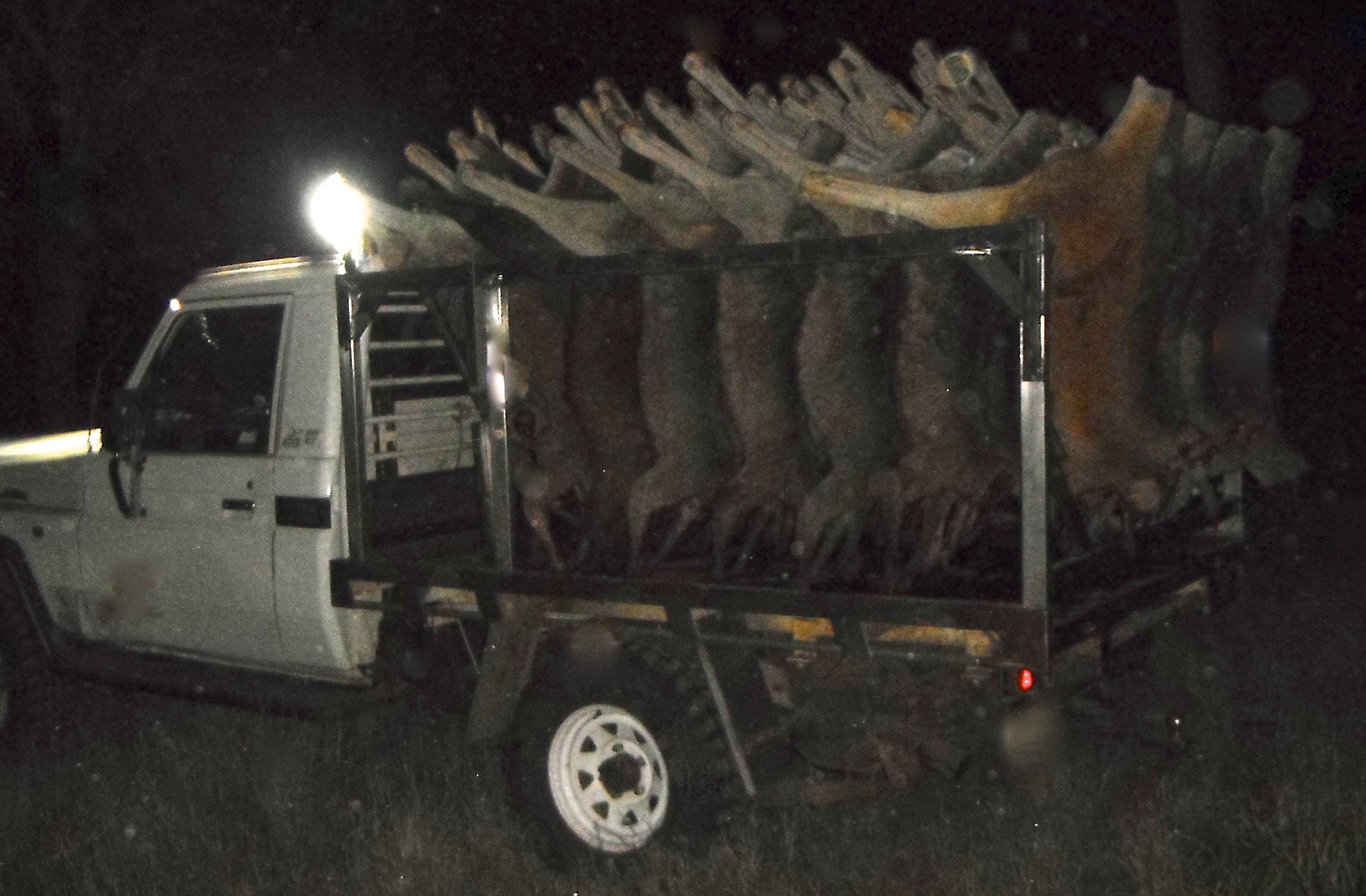
Backroom decisions made with zero stakeholder consultation has you questioning the system every time. Aerial surveys are being used regularly to restrict shooting and hunting activities. Often the story on the ground does not resemble the aerial survey findings.
The duck hunters have recently seen the same surveys used to push restricted seasons.
This ban has been highlighted by recent articles in The Queensland Times and ABC Southern Queensland.
The recently announced 2020 ban on kangaroo harvesting for the central zone will be “bloody devastating” to small western Queensland towns, according to roo shooter Alex Morris.
The Queensland Government currently allows the commercial harvesting of three species – the red kangaroo, the common wallaroo and eastern grey kangaroo – through the Macropod Management Program.
The ban will suspend harvesting of the common wallaroo and the eastern grey kangaroo as of January 1, affecting McKinlay, Flinders, Murweh, Paroo, Quilpie, Richmond, Winton, Longreach, Barcoo, Blackall-Tambo, Bulloo and Barcaldine shires.
Although Mr Morris works in Roma and won’t be directly affected by the upcoming ban, he fears what it will mean for his mates living and working further west.
“I think it’s a bit of a joke, really. A lot of fellas are going to lose permanent income,” Mr Morris said.
“In those little western towns there’s a lot of roo shooters around who rely on that money to get them through.
“Especially if they work on farms. A lot of them are farmhands as well and in the drought there’s not a lot to do except feed cattle, if there’s any cattle left.”
A spokesman for the Department of Environment and Science said the ban was “due to the ongoing drought”.
“Populations of the red kangaroo, the common wallaroo and eastern grey kangaroos have declined in the central zone south and central zone north,” he said.
“Macropod populations in Queensland depend on pasture availability and declines in macropod populations are a natural occurrence that always follows drought periods.”
The commercial harvest of macropods in Queensland is governed by the Federal Government’s Wildlife Trade Management Plan.
“This plan sets out population trigger points in relation to harvest quotas for macropods.
“When the numbers of macropods drops below the trigger point, harvest quotas are reduced or the harvest is suspended.
“This is what has occurred in the central zone north and the central zone south. The commercial harvest of macropods has been suspended after an aerial survey showed population estimates had reached the Federal Government’s trigger point.”
With the harvesting suspension affecting only some areas of the state, Mr Morris said roo shooters had two options.
“They’re either going to give it up and find another job or they’re going to shoot them and take them to a different zone where they can sell them,” he said.
“People might shoot them at Charleville and bring them into Roma.
“It’s going to have a huge impact on the industry, everywhere from shooters to processors.”
Mr Morris said he had witnessed roos that had been shot inhumanely in the chest and back with shotguns by people wanting to clear kangaroos off their properties.
Roo shooters are required to shoot kangaroos cleanly through the head.
“There needs to be a bond between a roo shooter and a farmer,” he said.
“That way a roo shooter is making money out of it.
“The farmer won’t really make anything but they’ll get the number of roos down and they’ll be killed humanely.”
Mr Morris said he believed wild dog fences were contributing to the depleted kangaroo numbers.
“Before these fences you didn’t see many roos on the road at all, but now that it’s a bit dry they’re looking for water and feed and getting pushed towards the roads.”
Quilpie Shire mayor and sheep and cattle grazier Stuart Mackenzie said the ban on macropod harvesting could be disastrous

for the industry, as full-time shooters might have to leave the area.
“If people move out of the area and if the cold rooms aren’t being filled, they’ll be closed down and moved,” Mr Mackenzie said.
“If you close down any industry for 12 months or more, it’s quite difficult to get it going again.”
Mr Mackenzie said roo shooters were instrumental in keeping kangaroo numbers at sustainable levels.
“Maintaining some sort of sustainable number is always a challenge and harvesting is a big part,” he said.
“When (kangaroos) previously existed there wasn’t any watering points so there weren’t as many numbers and they didn’t get out of control.
“Everything we’ve done to make it better for sheep and cattle has made it better for kangaroos.”
Graziers in the Quilpie region were running as many kangaroos as they were sheep, according to Mr Mackenzie.
He said when kangaroo numbers got out of hand, maintaining pastures and livestock numbers became more difficult, but the wild dog fences had helped give farmers and kangaroo shooters more control.
Mr Mackenzie said his property was fully enclosed with exclusion fencing.
“I see it as a win-win for everyone – the graziers, kangaroos and roo shooters,” he said.
“The fences don’t kill anything, it just stops them from migrating into areas where it’s rained.
“The fences all have water and food because you’re running stock there. You’re trying to maintain the pasture and water for your domestic stock, which also maintain the kangaroos.
“We have a lot of fencing. It’s not affecting the numbers, they still live in the same areas, but it is constraining them.”

0 Comments